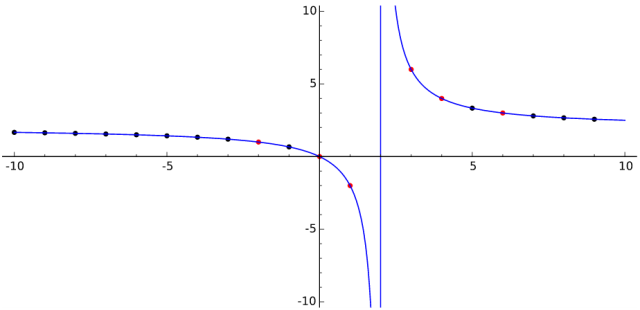Mark Dominus (陶敏修)
mjd@pobox.com

Archive:
| 2025: | JFMAMJ |
| JAS | |
| 2024: | JFMAMJ |
| JASOND | |
| 2023: | JFMAMJ |
| JASOND | |
| 2022: | JFMAMJ |
| JASOND | |
| 2021: | JFMAMJ |
| JASOND | |
| 2020: | JFMAMJ |
| JASOND | |
| 2019: | JFMAMJ |
| JASOND | |
| 2018: | JFMAMJ |
| JASOND | |
| 2017: | JFMAMJ |
| JASOND | |
| 2016: | JFMAMJ |
| JASOND | |
| 2015: | JFMAMJ |
| JASOND | |
| 2014: | JFMAMJ |
| JASOND | |
| 2013: | JFMAMJ |
| JASOND | |
| 2012: | JFMAMJ |
| JASOND | |
| 2011: | JFMAMJ |
| JASOND | |
| 2010: | JFMAMJ |
| JASOND | |
| 2009: | JFMAMJ |
| JASOND | |
| 2008: | JFMAMJ |
| JASOND | |
| 2007: | JFMAMJ |
| JASOND | |
| 2006: | JFMAMJ |
| JASOND | |
| 2005: | OND |
Subtopics:
| Mathematics | 245 |
| Programming | 99 |
| Language | 95 |
| Miscellaneous | 75 |
| Book | 50 |
| Tech | 49 |
| Etymology | 35 |
| Haskell | 33 |
| Oops | 30 |
| Unix | 27 |
| Cosmic Call | 25 |
| Math SE | 25 |
| Law | 22 |
| Physics | 21 |
| Perl | 17 |
| Biology | 16 |
| Brain | 15 |
| Calendar | 15 |
| Food | 15 |
Comments disabled
Fri, 20 Mar 2015
A public service announcement about contracts
Every so often, when I am called upon to sign some contract or other, I have a conversation that goes like this:
Me: I can't sign this contract; clause 14(a) gives you the right to chop off my hand.
Them: Oh, the lawyers made us put that in. Don't worry about it; of course we would never exercise that clause.
There is only one response you should make to this line of argument:
Well, my lawyer says I can't agree to that, and since you say that you would never exercise that clause, I'm sure you will have no problem removing it from the contract.
Because if the lawyers made them put in there, that is for a reason. And there is only one possible reason, which is that the lawyers do, in fact, envision that they might one day exercise that clause and chop off your hand.
The other party may proceed further with the same argument: “Look, I have been in this business twenty years, and I swear to you that we have never chopped off anyone's hand.” You must remember the one response, and repeat it:
Great! Since you say that you have never chopped off anyone's hand, then you will have no problem removing that clause from the contract.
You must repeat this over and over until it works. The other party is lazy. They just want the contract signed. They don't want to deal with their lawyers. They may sincerely believe that they would never chop off anyone's hand. They are just looking for the easiest way forward. You must make them understand that there is no easier way forward than to remove the hand-chopping clause.
They will say “The deadline is looming! If we don't get this contract executed soon it will be TOO LATE!” They are trying to blame you for the blown deadline. You should put the blame back where it belongs:
As I've made quite clear, I can't sign this contract with the hand-chopping clause. If you want to get this executed soon, you must strike out that clause before it is TOO LATE.
And if the other party would prefer to walk away from the deal rather than abandon their hand-chopping rights, what does that tell you about the value they put on the hand-chopping clause? They claim that they don't care about it and they have never exercised it, but they would prefer to give up on the whole project, rather than abandon hand-chopping? That is a situation that is well worth walking away from, and you can congratulate yourself on your clean escape.
[ Addendum: Steve Bogart asked on Twitter for examples of unacceptable contract demands; I thought of so many that I put them in a separate article. ]
[ Addendum 20150401: Chas. Owens points out that you don't have to argue about it; you can just cross out the hand-chopping clause, add your initials and date in the margin. I do this also, but then I bring the modification it to the other party's attention, because that is the honest and just thing to do. ]
[ Addendum 20220420: More and more, contracts are moving online and getting electronic signatures. This removes the option to modify the contract before signing: you can sign it intact, or not at all. Don't ever forget that the Man is always trying to get his foot on your neck. ]
[ Addendum 20220420: More about why it's important to push back ]
[Other articles in category /law] permanent link
Rectangles with equal area and perimeter
Wednesday while my 10-year-old daughter Katara was doing her math homework, she observed with pleasure that a !!6×3!! rectangle has a perimeter of 18 units and also an area of 18 square units. I mentioned that there was an infinite family of such rectangles, and, after a small amount of tinkering, that the only other such rectangle with integer sides is a !!4×4!! square, so in a sense she had found the single interesting example. She was very interested in how I knew this, and I promised to show her how to figure it out once she finished her homework. She didn't finish before bedtime, so we came back to it the following evening.
This is just one of many examples of how she has way too much homework, and how it interferes with her education.
She had already remarked that she knew how to write an equation expressing the condition she wanted, so I asked her to do that; she wrote $$(L×W) = ([L+W]×2).$$ I remember being her age and using all different shapes of parentheses too. I suggested that she should solve the equation for !!W!!, getting !!W!! on one side and a bunch of stuff involving !!L!! on the other, but she wasn't sure how to do it, so I offered suggestions while she moved the symbols around, eventually obtaining $$W = 2L\div (L-2).$$ I would have written it as a fraction, but getting the right answer is important, and using the same notation I would use is much less so, so I didn't say anything.
I asked her to plug in !!L=3!! and observe that !!W=6!! popped right out, and then similarly that !!L=6!! yields !!W=3!!, and then I asked her to try the other example she knew. Then I suggested that she see what !!L=5!! did: it gives !!W=\frac{10}3!!, This was new, so she checked it by calculating the area and the perimeter, both !!\frac{50}3!!. She was very excited by this time. As I have mentioned earlier, algebra is magical in its ability to mechanically yield answers to all sorts of questions. Even after thirty years I find it astonishing and delightful. You set up the equations, push the symbols around, and all sorts of stuff pops out like magic. Calculus is somehow much less astonishing; the machinery is all explicit. But how does algebra work? I've been thinking about this on and off for a long time and I'm still not sure.
At that point I took over because I didn't think I would be able to guide her through the next part of the problem without a demonstration; I wanted to graph the function !!W=2L\div(L-2)!! and she does not have much experience with that. She put in the five points we already knew, which already lie on a nice little curve, and then she asked an incisive question: does it level off, or does it keep going down, or what? We discussed what happens when !!L!! gets close to 2; then !!W!! shoots up to infinity. And when !!L!! gets big, say a million, you can see from the algebra that !!W!! is a hair more than 2. So I drew in the asymptotes on the hyperbola.
Katara is not yet familiar with hyperbolas. (She has known about parabolas since she was tiny. I have a very fond memory of visiting Portland with her when she was almost two, and we entered Holladay park, which has fountains that squirt out of the ground. Seeing the water arching up before her, she cried delightedly “parabolas!”)
Once you know how the graph behaves, it is a simple matter to see that there are no integer solutions other than !!\langle 3,6\rangle, \langle 4,4\rangle,!! and !!\langle6,3\rangle!!. We know that !!L=5!! does not work. For !!L>6!! the value of !!W!! is always strictly between !!2!! and !!3!!. For !!L=2!! there is no value of !!W!! that works at all. For !!0\lt L\lt 2!! the formula says that !!W!! is negative, on the other branch of the hyperbola, which is a perfectly good numerical solution (for example, !!L=1, W=-2!!) but makes no sense as the width of a rectangle. So it was a good lesson about how mathematical modeling sometimes introduces solutions that are wrong, and how you have to translate the solutions back to the original problem to see if they make sense.
[ Addendum 20150330: Thanks to Steve Hastings for his plot of the hyperbola, which is in the public domain. ]
[Other articles in category /math] permanent link




